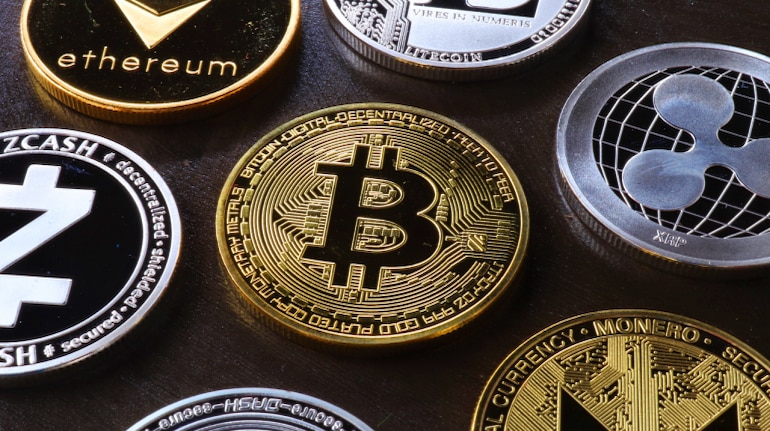Pi network cryptocurrency
Miners solve these puzzles and are allowed to create the next block of the blockchain. These new blocks are mined every ten minutes, and miners who create them are rewarded with a certain amount of Bitcoin zidane materazzi. The genesis block had a reward of 50 BTC, however, that reward has halved several times since.
Bitcoin introduced a type of currency (called cryptocurrency) that can be created and tracked on a public ledger (called blockchain), and which is not controlled by any central authority like a company or a country. Unlike with traditional currencies, everyone who can contribute the computational power needed to maintain this network will keep a record of every single Bitcoin transaction. In return, these participants will be able to gain Bitcoin by mining, which is the process of validating transactions being added to the ledger by solving complex puzzles. This is called the proof of work (PoW) consensus algorithm.
The entire cryptocurrency market — now worth more than $2 trillion — is based on the idea realized by Bitcoin: money that can be sent and received by anyone, anywhere in the world without reliance on trusted intermediaries, such as banks and financial services companies.
Bitcoin is used as a digital currency for peer-to-peer electronic transactions and traded for goods or services with vendors who accept Bitcoins as payment. In fact, Bitcoin spearheaded the cryptocurrency market, an ever-growing collection of digital assets that can be sent and received by anyone anywhere in the world without reliance on intermediaries.

Cryptocurrency market
The very first cryptocurrency was Bitcoin. Since it is open source, it is possible for other people to use the majority of the code, make a few changes and then launch their own separate currency. Many people have done exactly this. Some of these coins are very similar to Bitcoin, with just one or two amended features (such as Litecoin), while others are very different, with varying models of security, issuance and governance. However, they all share the same moniker — every coin issued after Bitcoin is considered to be an altcoin.
We calculate a cryptocurrency’s market cap by taking the cryptocurrency’s price per unit and multiplying it with the cryptocurrency’s circulating supply. The formula is simple: Market Cap = Price * Circulating Supply. Circulating supply refers to the amount of units of a cryptocurrency that currently exist and can be transacted with.
Cryptocurrency exchanges provide markets where cryptocurrencies are bought and sold 24/7. Depending on the exchange, cryptocurrencies can be traded against other cryptocurrencies (for example BTC/ETH) or against fiat currencies like USD or EUR (for example BTC/USD). On exchanges, traders submit orders that specify either the highest price at which they’re willing to buy the cryptocurrency, or the lowest price at which they’re willing to sell. These market dynamics ultimately determine the current price of any given cryptocurrency.
For smaller alternative cryptocurrencies or altcoins, there can be noticeable price discrepancies across different exchanges. At CoinCodex, we weigh the price data by volume so that the most active markets have the biggest influence on the prices we’re displaying.
The two major categories of cryptocurrencies are Proof-of-Work and Proof-of-Stake. Proof-of-Work coins use mining, while Proof-of-Stake coins use staking to achieve consensus about the state of the ledger.
Cryptocurrency prices
The total crypto market volume over the last 24 hours is $148.54B, which makes a 12.36% decrease. The total volume in DeFi is currently $25.79B, 17.36% of the total crypto market 24-hour volume. The volume of all stable coins is now $138.76B, which is 93.42% of the total crypto market 24-hour volume.
Discover price changes and market trends at a glance. Our heatmap offers a unique and intuitive way to understand market moves, while our charts gives a more detailed view on coins, making it easy to spot top gainers and losers on various timeframes such as hourly, daily and weekly.
IEO stands for Initial Exchange Offering. IEOs share a lot of similarities with ICOs. They are both largely unregulated token sales, with the main difference being that ICOs are conducted by the projects that are selling the tokens, while IEOs are conducted through cryptocurrency exchanges. Cryptocurrency exchanges have an incentive to screen projects before they conduct a token sale for them, so the quality of IEOs tends to be better on average than the quality of ICOs.
An altcoin is any cryptocurrency that is not Bitcoin. The word “altcoin” is short for “alternative coin”, and is commonly used by cryptocurrency investors and traders to refer to all coins other than Bitcoin. Thousands of altcoins have been created so far following Bitcoin’s launch in 2009.

The total crypto market volume over the last 24 hours is $148.54B, which makes a 12.36% decrease. The total volume in DeFi is currently $25.79B, 17.36% of the total crypto market 24-hour volume. The volume of all stable coins is now $138.76B, which is 93.42% of the total crypto market 24-hour volume.
Discover price changes and market trends at a glance. Our heatmap offers a unique and intuitive way to understand market moves, while our charts gives a more detailed view on coins, making it easy to spot top gainers and losers on various timeframes such as hourly, daily and weekly.
Pi network cryptocurrency
Mining on the network is done by simply pressing a button daily as the rewards replenish every 24 hours. Due to Pi’s regular halving — an event in which the number of coins mined is reduced to half — the network attracts more users due to its scarcity. In addition, the network remains secure by Pi’s “security circle” whereby groups of 3–5 users vouch for one another’s credibility through trust graphs.
The question is whether Pi is worth your time. Some users see it as a no-lose situation. If Pi never amounts to anything, they’re not out any money. If it does, they can sell the PI coins that took very little time and energy to obtain.
The Maximum Supply of Pi is 100 billion tokens. The Maximum Supply is comprised of the following: 65 Billion tokens (or 65%) are allocated for all community mining rewards; 10 billion (10%) are allocated for foundation reserves; 5 billion (5%) are allocated for liquidity purposes; and 20 billion (20%) are allocated for the Core Team. Each allocation mentioned above tracks the community Migrated Mining Rewards issuance pace, so the proportions of each allocation in the total supply remains the same at any given time.
The Pi Network app is about as straightforward as it gets. It has a lightning button that you tap to mine Pi. This also starts a 24-hour countdown, and, when it ends, you need to check in and tap the button again to continue mining. You don’t need to leave the app open to mine, so all it takes is opening the app and tapping the button every 24 hours.
Conversely, with cryptocurrencies like Bitcoin, nodes must compete against each other to validate transactions. With Pi, the more nodes you invite to the network, the more rewards you receive for securing the network.
